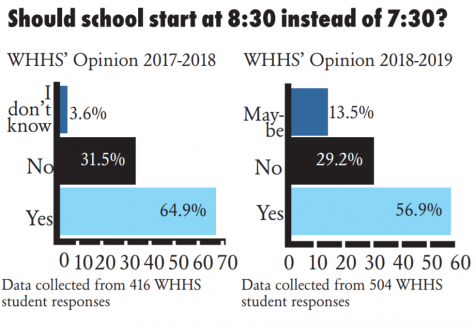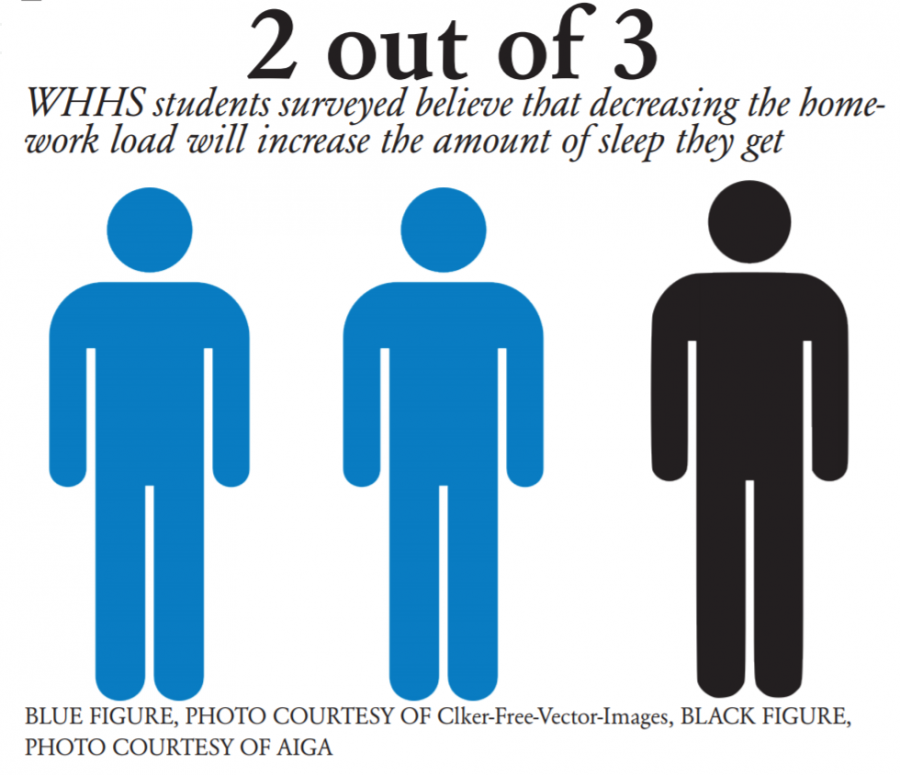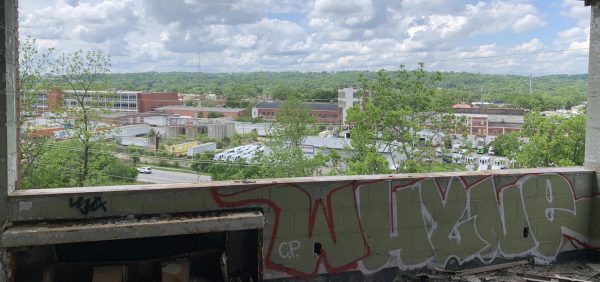Student left in dark with early school start times
A majority of students in response to a Chatterbox poll believe that a smaller homework load will help them get more sleep. An average WHHS student gets less than the recommended 9 hours of nightly sleep.
When I walk down to the bus stop at 6:30 a.m., it’s still dark outside. Wiping the sleep from my eyes, I walk past dimly lit houses whose inhabitants have not yet awoken.
My commute to school, just like many others, starts very early in the morning. But does it have to be this way? Should it be?
The debate over school start times has been a long and complicated one.
A majority of WHHS students have consistently supported moving school start time to 8:30. Surveys conducted by The Chatterbox during the 2017-2018 and 2018-2019 school years showed that a majority of students support the change. This sustained support suggests a need for change. But there are concerns, too.
Some worries revolve around how extracurricular activities, jobs and other after-school programs will be affected.
But, Jilda Vargus-Adams, a WHHS parent and proponent of later start times, explained that “Many of these concerns are less salient within CPS because there is already a significant portion of the high schools who have an appropriate high school start time. There is a clear demonstration that you can still have a football team, the orchestra can still play, students can be in sports, have jobs and all of those things and attend a [CPS] high school that starts at 8:30 or later.”
Woodward Career Technical High School is a Cincinnati Public School beginning at 8:30 with about 992 students enrolled, according to U.S. News and World Report. Woodward offers more than 20 after-school clubs as well as over 10 athletic opportunities, showing that after-school activity is not decreased based on a later start time. Additionally, starting school at 8:30 offers a greater possibility for clubs to be hosted both before and after school.

New polling from the Chatterbox shows that more students are unsure about school start times. 13.5% were unsure, up from 3.6% in a 2017-2018 poll.
While the time for after-school activities is a concern, it is also easily addressed. The necessity of sleep for students, however, outweighs many other arguments. The benefits of students sleeping more are numerous, and range from improving mental and physical health to gaining billions of dollars to the U.S. economy.
When students sleep more, the risk of anxiety and depression decreases severely, according to Andrew Fuligini, a professor at UCLA. Not only does more sleep improve students’ welfare, but the economic gain is also significant.
A major concern of starting CPS later is the Metro bus company losing “tens of millions of dollars,” according to CPS. However, overall national positive economic trends could outweigh this cost. According to the Rand Corporation, after only two years of schools starting at 8:30, the U.S. economy would gain $8.6 billion. And after a decade, later school start times would contribute $83 billion to the U.S. economy.
Dean Beebe, the director of the Neuropsychology Program at Cincinnati Children’s Hospital, explained that later school start times are so vital to students during adolescence since internal body clocks shift later. However, schools don’t adjust with students’ body clocks leaving many teenagers sleep deprived.
At the end of the day, lack of sleep for students is a very serious problem. As Vargas-Adams explained, “If there were a chemical in the water at [WHHS] that created those negative effects for most of the students we would spend any amount of money to remove that threat. So we just need to do the same thing for [this] public health crisis.”
All views shared in the Opinions section of The Chatterbox belong to their respective authors, and may not represent the views of the publication as a whole.
Your donation will support the student journalists of Walnut Hills High School. Your contribution will allow us to purchase equipment, cover our annual website hosting, printing costs and offset competition and conferences fees for students.








